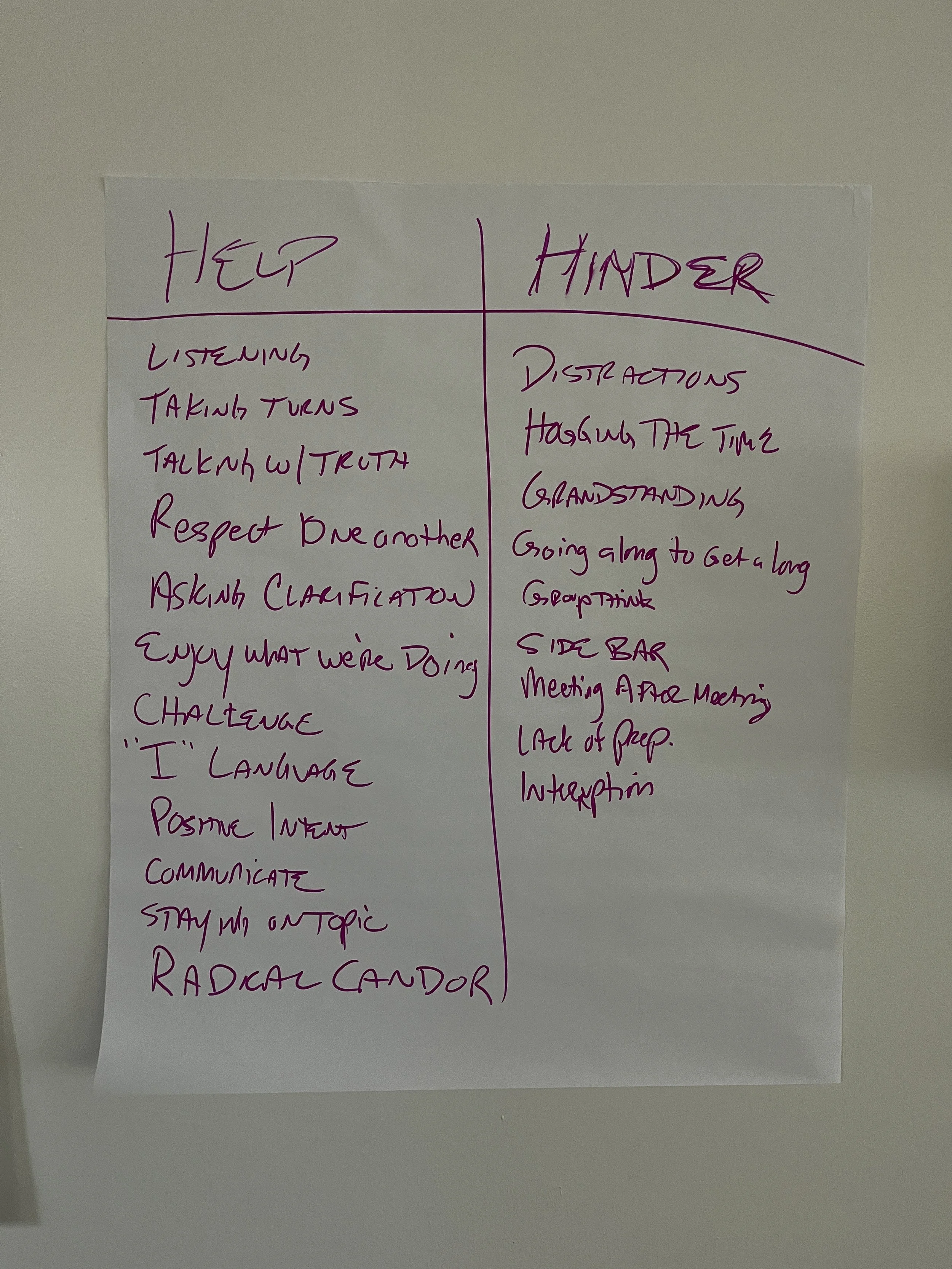Help or Hinder: The First Agreement of Every Great Team
If the Team Charter is the why and what of a team — its purpose, goals, and boundaries — then Team Protocols are the how. They define how the team will behave, meet, make decisions, and resolve conflict.
Too often, teams launch with enthusiasm but little structure. They agree on a mission, maybe a few goals, and then assume the rest will sort itself out. Spoiler: it rarely does. The truth is, high-performance doesn’t happen by accident — it’s designed through shared agreements, consistent behaviors, and discipline.
That’s where protocols come in.
Every great team begins with a framework of protocols. You can start with templates and examples, however the team must fill in the blanks and add to the documents to make them their own. Just as with the Team Charter, the value isn’t in the document itself — it’s in the conversations and relationship building during the building and agreement phase.
When a team collectively defines how it will handle meetings, decisions, and conflict, it starts to build autonomy and accountability. This process isn’t busywork; it’s culture work. It signals that how we work together matters just as much as what we produce.
In fact, I recommend teams complete their protocols within the first two months of forming (remember a team that meets regularly stays in Tuckman’s Forming stage for only a few months). It sets expectations early, long before the “storming” stage hits.
Help or Hinder: The First Team Agreement
When I facilitate new teams, the first order of business is usually creating a Help/Hinder List. It’s deceptively simple: creating a list of behaviors that help the team function and those that hinder it.
Early lists often sound basic: listen to each other, don’t interrupt, start and end on time. But as the team matures, those norms evolve. They become more nuanced - things like “challenge ideas, not people” or “don’t repeat, advance the thinking”
What matters most is that every team member agrees to live by the list and hold each other accountable when those norms slip. It’s a small exercise that sets a massive cultural precedent: we are responsible for the quality of our own teamwork.
I usually post a help/hinder list up as we meet as a team so that there is a visual display of helpful behaviors and hindering behaviors. When the list is visible, it becomes part of the room’s culture. You don’t need to call someone out harshly — a simple glance at the wall reminds the team of its own standards. The list becomes a silent facilitator, guiding tone, pace, and respect in every meeting.
A Help/Hinder list should evolve as your team evolves. Revisit it every few months - especially after tough projects or transitions - and ask, What’s still true? What needs to change? When the team helps write the new version, they re-own the community they’re building.
Pro Script Tip:
“Hey John, I know you’re eager to keep sharing your ideas — which we really appreciate — but one of the things on our Help/Hinder list is creating space for others to speak. Let’s make sure everyone gets a turn on this one.”
“Hey Sam, I can tell you feel strongly about this topic. Just a quick reminder — one of our Help behaviors is focusing on ideas, not individuals. Let’s stay curious and make sure we challenge the concept, not the person.”
“Hey team, I’m noticing a few of us checking out or multitasking. One of our Help behaviors is being fully present, and that’s tough when we’re juggling other things. Let’s take a quick breath, close the laptops, and refocus for the next 15 minutes.”
What are the top three behaviors that would most help your team — and which one hindering behavior is showing up most often right now?